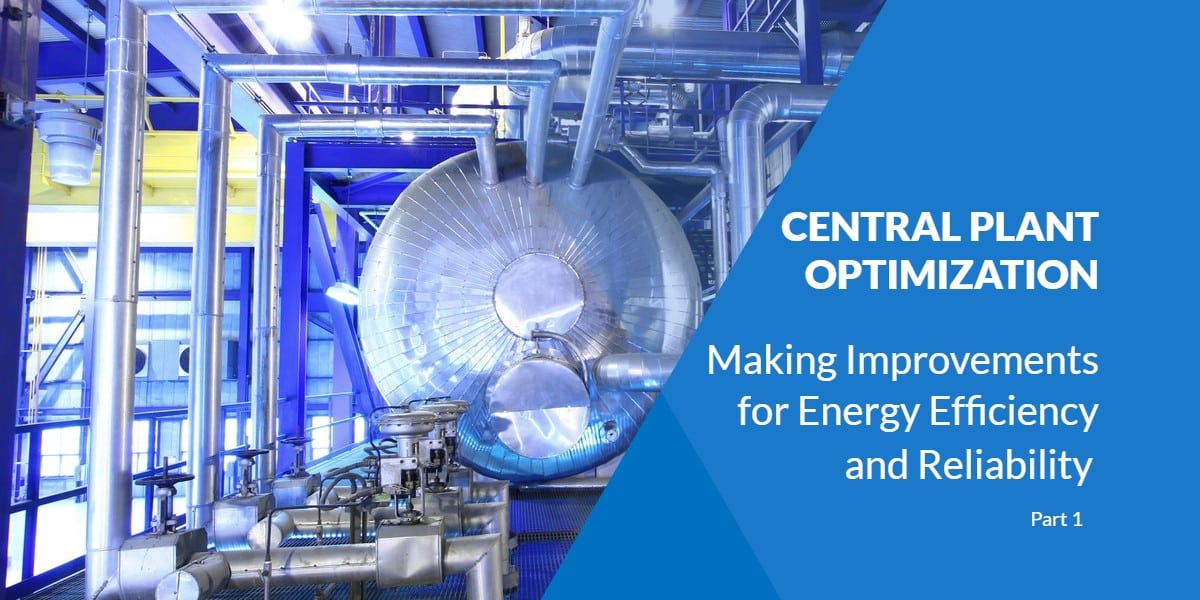
 Posted by Pam Hoddinott
Posted by Pam Hoddinott Owners of large commercial and industrial facilities typically utilize central utility plants to provide the necessary forms of energy to the facility to support operations. For manufacturers, these forms of energy might include compressed air and steam. For data centers, they might include backup generators and uninterruptible power supply (UPS) systems. For all buildings, they include systems like boilers and chillers and cooling towers to heat and cool your space.
It makes sense to provide this functionality through central utility plants in large buildings because it’s less expensive to make the initial capital investment in larger assets in a common spot, and it’s less expensive initially to operate these assets from an energy and maintenance standpoint. However, over time, things happen inside those facilities and to those central utility plants that changes that equation. Let’s spend a little time noodling over what those changes are, and then thinking about how you can work to understand them, how to overcome them, and how to attain Central Plant Optimization.
First, central utility plants were designed, sized, and configured based on the loads anticipated during their conception. Those loads change over time as operations inside the building change, and a central plant that is only 10 years old is often dramatically oversized. Second, systems and equipment in the central utility plant become less efficient and less reliable over time as they age and are utilized. It’s no different than your car or your home HVAC unit – after 15 years, they just aren’t as cost effective or as reliable as they used to be. Third, because all of us have been asked to “do more with less”, it is difficult to find and retain the talented engineers and technicians you need to operate central utility plants. Finally, there may be single points of failure inside that central utility plant that can result in extended or frequent momentary outages.
There is some good news, though, and that is that you can address all of these current deficiencies with one comprehensive solution if you think about it the right way. The same improvements that modernize and right size your central utility plant can also make it more efficient and more reliable. Most typically, this kind of Central Plant Optimization can be done in a way that includes variable speed control of pumps and fans that improve system performance and accuracy of control inside the building. And for organizations that have made commitments to reduce their carbon footprints and become more sustainable, central utility plant improvements are often the single biggest tool that can be used to drive those outcomes. This really is a situation where many kinds of value can be created through one well designed and implemented improvement project.
In Part 2 of our “Central Plant Optimization – Making Improvements for Energy Efficiency and Reliability” blog series, we’ll address an approach you can take to reposition your central utility plant to meet the needs of your buildings for the future while delivering an attractive financial return to your organization. We will also deal with a common problem for facility engineers and operators: how to calculate and then position the financial return on this kind of project within your organization so that this opportunity gets the attention it deserves.
Chateau Energy Solutions Making Energy an Asset®
Ready to get started on the path to energy efficiency and sustainability?